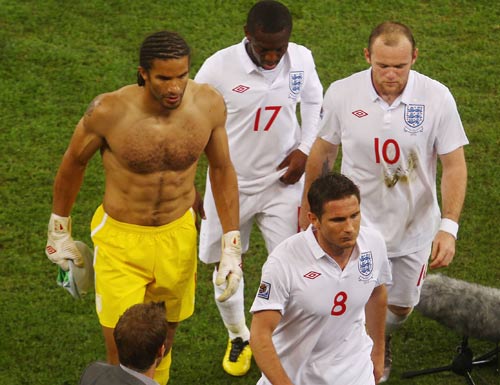
Formula One's regulations quite clearly state that a circuit's limits are defined by the two white lines that run around its perimeter. It seemed odd, therefore, that there was even a debate about whether or not Sebastian Vettel should have been penalised for passing Jenson Button on the penultimate lap of the German Grand Prix. The Red Bull drove with all four wheels off the circuit and in doing so gained an advantage. It was a breach of Article 20.2 of the sporting regulations and the precedent for such a breach is a drive-through penalty (or 20-second post-race penalty in lieu of that). End of story.
But it's a shame that the stewards had to tinker with the results after the chequered flag. Nobody wants to see a podium trophy change hands after the ceremony and it encourages conspiracy theories that taint the image and enjoyment of the sport. It's not the stewards' fault - they're just doing their jobs - the problem is that circuits no longer punish the drivers so the officials have to take up the slack.
The introduction of more and more run-off areas in the past decade has created opportunities for drivers to take liberties and as a result the stewards have had to take a more active role. Hockenheim, and the changes it has seen since 2002, typifies this shift. Part of the spirit of the old circuit is still intact in the stadium section and, as Michael Schumacher found out in free practice, the thin ribbon of asphalt still has the ability to bite back. But much of the circuit is now nestled between expansive run-off areas and that encourages drivers to push beyond the limit.
For most of the second half of the race Fernando Alonso had at least two wheels off the track in the final corner - nothing wrong with that - but on more than one occasion all four wheels strayed beyond. Presumably a driver of Alonso's standard wouldn't be consistently putting the car out there if there wasn't an advantage to be gained, but rather than facing the consequences when he pushed a little too far he was able to continue regardless. The risk / reward equation was permanently skewed towards reward and that's not good.
The industry-standard response is to put a thin strip of artificial grass beyond the exit kerb, but in the dry, and with the current levels of downforce, the drivers barely notice. Real grass has more serious consequences and is used to good effect at Silverstone. A thin strip has been left at corners such as Aintree, Becketts and Chapel before the safety net of the tarmac run-off area kicks in. In the interests of safety this isn't possible everywhere, but it should be considered more often than not.

Another effective solution can be found on the inside of turn eight at the Circuit de Catalunya. Over recent years the corner almost became non-existent as drivers attempted to cut more of the circuit away as they exited turn seven, but in 2011 the problem was solved by a small section of 'sausage kerb'. Now the drivers risk damaging the bottom of the car if they don't remain between the white lines and they have had to alter their entry to turn seven accordingly. Again, such measures are not possible everywhere, but it's another example of what can be done to retain the challenge of the circuit while ensuring it remains safe.
The turn six hairpin at Hockenheim needs to be given the same kind of attention to detail, and at the very least a strip of artificial grass should be laid on the outside. Tracks like Abu Dhabi are probably beyond saving, but it should be a major consideration in the future design of any circuit. The more punishing the circuits are, the less intervention will be needed from the stewards and the more emphasis there will be on driving talent. End of story.
Laurence Edmondson is an assistant editor on ESPNF1
© ESPN Sports Media Ltd.
 Laurence Edmondson is deputy editor of ESPNF1 Laurence Edmondson grew up on a Sunday afternoon diet of Ayrton Senna and Nigel Mansell and first stepped in the paddock as a Bridgestone competition finalist in 2005. He worked for ITV-F1 after graduating from university and has been ESPNF1's deputy editor since 2010
Laurence Edmondson is deputy editor of ESPNF1 Laurence Edmondson grew up on a Sunday afternoon diet of Ayrton Senna and Nigel Mansell and first stepped in the paddock as a Bridgestone competition finalist in 2005. He worked for ITV-F1 after graduating from university and has been ESPNF1's deputy editor since 2010

